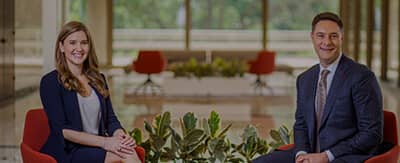Waco Unsafe Lane Change Accidents
Unsafe lane changes are a common cause of car accidents, often resulting in serious injuries and property damage. Whether due to negligence, distraction, or aggressive driving behavior, these accidents can have devastating consequences for all parties involved. Reach out today if you need legal help for a Waco car accident.
What Is an Unsafe Lane Change Accident?
An unsafe lane change accident occurs when a driver maneuvers their vehicle from one lane to another in a manner that jeopardizes the safety of other motorists on the road. This can include changing lanes without signaling, failing to check blind spots, or cutting off another vehicle. Unsafe lane changes often result in collisions, typically side-swipe accidents or rear-end collisions.
Texas Laws on Lane Changes
Changing Lanes Safely
Under Texas Transportation Code 545.060(a), “an operator on a roadway divided into two or more clearly marked lanes for traffic, shall drive as nearly as practical entirely within a single lane, and may not move from the lane unless that movement can be made safely.” This law also applies to the duty to yield when merging.
Turn Signal Use
Utilizing turn signals is critical to communicate intentions to other drivers before changing lanes or making turns. Texas Transp. Code 545.104(a) mandates that “an operator shall use their signal . . . to indicate an intention to turn, change lanes, or start from a parked position.”
Left Turns
Left turns at intersections must be made from the left-most lane and completed into a lane going in the intended direction, as specified by Tex. Transp Code 545.101. This law states that “to make a left turn at an intersection, an operator shall approach the intersection in the extreme left-hand lane lawfully available to a vehicle moving in the direction of the vehicle’. Additionally, “after entering the intersection, turn left, leaving the intersection so as to arrive in a lane lawfully available to traffic moving in the direction of the vehicle on the roadway being entered.”
Causes of Unsafe Lane Change Accidents
The most common causes of unsafe lane change accidents are as follows:
Driver Distraction
Distractions, such as texting, talking on the phone, or adjusting the music, can cause drivers to overlook surrounding traffic and fail to check blind spots before changing lanes.
Impaired Driving
Driving under the influence of alcohol or drugs can affect judgment, coordination, and reaction times, making it more likely for drivers to make unsafe lane changes.
Aggressive Driving
Aggressive behaviors such as tailgating, speeding, and weaving in and out of traffic.
Failure to Signal
Failing to use turn signals or signaling improperly can lead to confusion among other drivers.
Not Checking Blind Spots
Drivers who fail to properly check their blind spots before changing lanes may not see other vehicles, leading to side-swipe collisions or forcing other drivers to take evasive action.
How to Prove Another Driver is At Fault for an Accident Due to an Unsafe Lane Change
Proving fault after an unsafe lane change accident can be challenging if the at-fault driver is disputing liability. When each driver denies liability, insurance companies typically conduct thorough investigations. Therefore, gathering a comprehensive collection of evidence is critical. For example, evidence such as police reports, witness statements, photos of the accident scene, and vehicle damage assessments. Additionally, insurance adjusters may consider factors such as traffic laws, weather conditions, and any applicable traffic citations issued. If both parties have conflicting accounts of the accident, insurers may negotiate a settlement or involve third-party mediators to reach a resolution. In cases where fault remains unclear, insurers may resort to arbitration or litigation to determine liability.
To ensure you receive justice and the compensation you deserve, arrange a free consultation with a trusted Waco accident attorney today.
